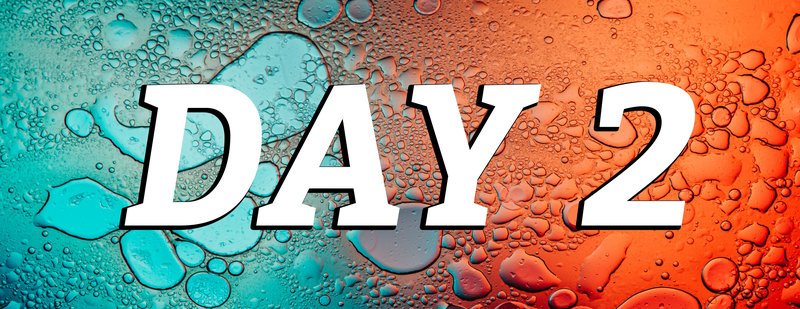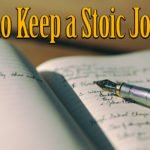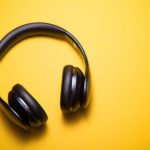This Part 2 of the Voluntary Discomfort series, Part 1 explains what Voluntary Discomfort is and it’s benefits.
After writing the “How Voluntary Discomfort Can Change Your Life” post, I decided to do three days of voluntary discomfort myself. I wanted to see if the true benefits of voluntary discomfort aligns with the theory behind it and whether I could discover any additional benefits.
In this post, I will go over my experience of taking cold showers, sleeping on the floor, fasting, and not going on ANY entertainment platforms for three days. Then I’ll discuss some of the key takeaways from my three days of voluntary discomfort.
Contents
The Experience
Rules
“Set aside a certain number of days, during which you shall be content with the scantiest and cheapest fare, with course and rough dress, saying to yourself the while: ‘Is this the condition that I feared?” – Seneca
While Seneca’s original quote seems only to mention physical discomforts, I decided if I wanted to test myself, I’d have to go further.
Many people have done the “x number of days without social media” challenge, and many practicing Stoics have done days of colds showers and sleeping on the floor as a voluntary discomfort.
But I knew it would be easy to distract myself from the hungry if I just kept watching Youtube, or distract myself from the boredom by eating a large meal/constant snacking. Seneca didn’t have to worry about that as he didn’t have the constant distractions of the internet.
So a modern-day version of voluntary discomfort would have to include a ban on all entertainment platforms.
That being said, here are the rules of my three days of voluntary discomfort:
1. This experience will last from the 3rd of April to the 6th of April, starting at 9:14 PM. 72 Hours in Total.
2. Only Cold Showers for the three days
3. Only Sleeping on the floor for three days
4. No YouTube, Streaming, Gaming, Social Media, or Reddit.
5. No solid food, only meal replacement shakes allowed.
Day 1
The experiment started on a Friday night, 9:15 PM. So it will last from Friday night to Monday night.
When it was time for bed, I got a piece of carpet that’s just about my height and laid it down on the floor to use as my mattress. I then found a sleeping bag and used a hoodie as my pillow.
Although I expected sleeping on the floor to be the easiest of the challenges, I did not expect a hoodie would make such an uncomfortable pillow.
Partly due to the pillow, partly due to my mattress (the thin carpet) was a bit too short and my feet were pushed against all sorts of things in the room, I didn’t sleep the best on night 1.
If you’ve ever taken a long flight and tried to sleep on it, you know what it’s like. While it’s possible to sleep for a good amount of hours, you would inevitably wake up (or be half-awoken) multiply times to adjust your sleeping position.
It was kind of like that, but less frequent. The most uncomfortable part was the crappy hoodie pillow.
It was halfway through the night when I caved for the first time and got my pillow. Technically I didn’t break the rules I set for myself. Next time I’ll remember to include “no pillows allowed” in the voluntary discomfort rules.
Despite the less than ideal sleeping condition, I woke up the next day feeling quite refreshed.
But of course, as soon as I woke up, the next challenge presented itself: not going on Youtube.
Many people have a habit of checking their social media or email the first thing in the morning. For me, it’s Youtube. Sometimes I might stay in bed for up to two hours just watching Youtube before getting up.
Surprisingly, it wasn’t too difficult to resist the temptation to go on Youtube. I guess Robert Downey Jr. was right; once you make your mind about something, it’s not hard to stop (more on this later).
For the most part, not eating on day 1 wasn’t too difficult. Since I already do intermittent fasting and sometimes one meal a day, I was already used to being hungry; having the meal replacement shake also helped a lot.
If you’ve never tried it, a meal replacement shake is almost identical to a protein shake, but instead of just protein, it has all the nutrition and calories you would need in a day. Hence, “meal replacement.”
The meal replacement shake can make you feel full for a while after drinking it, but not nearly as much as an actual meal.
Taking a cold shower was more difficult in anticipation than reality. The hardest part was before the cold water hits your body, as I was building it up in my mind. After the initial couple seconds of shock, it was still unpleasant, but not at all difficult.
Repeating the four Stoic virtues out loud also helped with enduring the coldness: Wisdom, Justice, Courage, Temperance.
All in all, day 1 of voluntary discomfort was not too challenging; my toughest challenge has yet to come, which will happen on day 2.
Day 2
Sleeping on the floor became much easier on day 2. It’s truly amazing how the human body adapts to harsh conditions, as I didn’t experience any of the twistings and turning from day 1. Although I wouldn’t say sleeping on the floor is much of a ‘harsh condition.’
After a good night’s sleep, I was ready to take on another day of voluntary discomfort.
Usually, I would procrastinate a bit before starting work; but since my methods of procrastination has been banned, I started my work straight away.
The real challenge of this entire thing came around 6 PM on day 2.
At that point, my hunger was making it almost impossible to concentrate. It was just like Maslow’s Hierarchy of Needs, my basic physiological need for food was not met, so any of the needs above that are negligible.
Despite the abundance of carbohydrates in my meal replacement powder, I think I was experiencing the Keto-Flu, or at least almost the same symptoms as the keto flu.
My non-expert theory is that this is probably due to the lack of solid foods in my stomach, causing my body to believe I haven’t eaten anything, which is technically accurate.
That was the moment I first had the idea of giving up. I thought about stopping the voluntary discomfort experiment a day short, so I could start eating tomorrow. I even though about giving up right then and there (keep in mind it’s been almost 48 hours since my last meal).
Although I had the energy level of someone with a slight fever, I decided I wasn’t going to come this far only to come this far. After the two or three hours of doing everything I can to endure the hungry, it went away, along with the notion of giving up.
Day 3
Day 3 was considerably easier to endure than the previous two days, partially because I knew I could start eating come 9:15 PM.
It felt like the “keto flu” symptoms have passed, and my energy levels were much higher, at times it even felt like I had more energy than usual.
After three days of discomfort, I was getting used to it. I believe if I choose to, I could have continued it for a couple more days without any difficulties. But I didn’t have enough meal replacement powder to continue, so I stopped on Monday night just as planned.
Takeaways
Knowledge ≠ Wisdom
This takeaway applies on so many levels that it’s almost mind-blowing. Even just the knowledge of the fact that knowledge is not wisdom, is a far cry from the wisdom that knowledge is not wisdom.
“True philosophy is a matter of little theory and a lot of practice.” – Jonas Salzgeber
On day 2, while I was almost going to give in to hunger, I came to this realization.
I knew all about how “our thinking makes it so,” I knew that my judgment of the experience is what’s causing the suffering more the physical sensation of hunger. But I was suffering nonetheless.
Because I was drinking the meal replacing shakes, I knew I had enough calories, and my hunger was more or less psychological, but knowing it didn’t make it any easier.
I kept thinking about the Stoic virtues and various quotes that can help me see how my hunger was not real, but it wasn’t helping all that much. That’s when I realized that quotes and theories are not supposed to be a “be all end all,” but rather a starting point for true wisdom and virtue.
Knowing that “the soul alone turns and moves itself,” doesn’t mean I was all of a sudden impervious to all adversities in life. It just meant that I had the knowledge of how to approach those adversities wisely, but wisdom and virtue has to come from actual experience.
I can read as many books on Stoicism as I like, but non of it matters until I start to apply it in my own life.
*For Stoic exercises that can help you gain more wisdom instead of book knowledge, check out our Free 7 Stoic Exercises Guide:
Time Saved
One of the most immediate benefits that jumped out to me was how much time I was saving by forgoing pleasures.
As mortal beings, the most important asset we have is our time. For it is the only resource of which cannot be gained infinitely or gained at all; time depletes at an equal rate for all of us.
There are a thousand ways to spend an hour, and it is up to each and every one of us how we spend it.
The Stoics believed that there is nothing more worthy of our time than improving our characters. Whether you agree with that or not, we could all benefit from having extra time in our lives.
The nature of time dictates that the more you spend it on one thing, the less you have for something else.
Therefore, to create more time for the things that truly matter to you, you must do without some of the other less important things.
It is up to you to decide whether forgoing the pleasure of eating in order to have an extra hour or two every day is worth it. Keep in mind this doesn’t mean you have to starve yourself; you can use a meal replacement as I did or simply start doing intermittent fasting and only eat one or two meals a day.
Let’s say you decided to start doing intermittent fasting and skipping breakfast, and on some days, you might even skip lunch; perhaps on average, you could save 45 minutes a day from this. 45 minutes a day translates to 270+ hours a year, that’s more than a month’s worth of 8-hour workdays!
Procrastination
As mentioned above, I am extremely prone to procrastination, as I would sometimes spend an hour or two in bed watching Youtube before getting up.
By eliminating the method of which I procrastinated (may it be Youtube, social media, or anything else), I was unable to procrastinate. It seems obvious, but most solutions to problems are.
However, knowing that merely getting rid of the method of procrastination can stop it, is one thing; to have the discipline to pull it off is another thing.
As a famous once upon a time drug addict once said:
“It’s not that difficult to overcome these seemingly ghastly problems. What’s hard is to decide,” – Robert Downey Jr.
Overcoming procrastination is not that different from overcoming a drug problem in that regard, albeit much easier.
Once you’ve made that decision to stop procrastinating, once you’ve truly made that decision, the hardest part is behind you. Although you do have to be always on your toes to prevent yourself from sliding backing into your old habits.
So why not go ahead and decide to stop doing whatever is it that makes you procrastinate for a day or two. If that thing is Youtube, for example, writing it down with pen and paper that “I WILL NOT GO ON YOUTUBE FOR THE NEXT 48 HOURS.”
You’ll start to realize once the method of procrastination is removed from you, so does procrastination itself. If an alcoholic didn’t have access to alcohol, would he still be drinking? No, because there is nothing for him to drink. The hard part is stopping himself from getting that alcohol, which becomes much easier once he (truly and wholeheartedly) decides to quit.
*Here’s a post on how to stop procrastination.
It’s Hard When It’s Hard, Easy When It’s Easy
This is perhaps one of the biggest takeaways from the voluntary discomfort exercise.
At the start of the experiment, I was thinking to myself that this is so easy and wouldn’t be a challenge at all.
But of course, that wasn’t the case, as I almost gave up on day 2. How could it be that I go from thinking that it’s no big deal to almost giving up?
I think it is due to our natural inability to picture difficulties while things are easy. Perhaps if I had done a negative visualization exercise beforehand, the hunger wouldn’t have hit me so hard.
When things are going well in life, it is easy to think about adversities and brush it off as no big deal; it is only when we are thrown into such difficulties with no warning, do we understand the magnitude of these situations.
Thinking back, I now realize it was foolish to believe that I could easily ensure three days of ‘no eating’ when it’s only been 15 hours since my last meal.
This is all the more reason to participate in negative visualization, as it provides us with the ability to mentally prepare for these difficulties in the ‘comfort’ of our minds.
“If you would not have a man flinch when the crisis comes, train him before it comes” – Seneca
It is easy when things are easy and hard when it’s hard. So prepare yourself for the hard times while you have it easy.
Taking Things Granted
We’ve all been sick before, and we all had similar thoughts such as, “I miss being healthy, I’m going to be so grateful when I recover.” But we rarely ever stick to that promise.
I remember thinking how grateful I would be of food and warm showers once it was all over, but I know that gratitude is unlikely to last.
It is easy to be grateful for food when you’re hungry and grateful for water when you’re thirsty but much harder to be grateful for things when you don’t lack them in your life.
“Reflect on the greatest blessings in what you do have, and on their account remind yourself how much they would have been missed if they were not there.” – Marcus Aurelius
As we’ve mentioned in this post, gratitude is the key to happiness. And the key to gratitude?
Well, as far as I can think of, the easiest way to be grateful for something is when that something is missing from your life; and the only two ways to achieve that would be through Voluntary Discomfort and Negative Visualization.
Hunger Passes, Just Like All Suffering.
“Nothing happens to anybody which he is not fitted by nature to bear.” – Marcus Aurelius
At first glance, the quote above might seem like nonsense, but upon closer inspection, it makes perfect sense.
I experienced the meaning of this quote first hand during day two of the voluntary discomfort, as I was thinking to myself that I couldn’t bear the hunger anymore. That’s when I realized what Marcus Aurelius had meant… I can bear it because I am bearing it.
Let’s say that something happened to your water supply and you have to go two days without water, are you able to bear it? Yes, because humans can generally go three days without water.
But what if you have to go for five days without water? Well, you’ll probably die before five days is up, and up to the moment of your death, you are bearing the suffering; but once you die, you are no longer bearing the suffering.
Therefore, there is no such thing as “I can’t bear this anymore!” because you’d be dead if you can’t bear it.
Here’s Marcus Aurelius again, putting it more bluntly:
“Everything that happens either happens in such a way as you are formed by nature to bare it, or as you are not formed by nature to bare it. If, then, it happens to you in such a way as you are formed by nature to bear it, do not complain, but hear it accordingly. But if it happens in such a way that you are not formed by nature to bear it, do not complain, for it will perish after it has consumed you.” – Marcus Aurelius
The Real Battle Starts With The Idea of Quitting
“An idea is like a virus. Resilient. Highly contagious, and even the smallest seed of an idea can grow. It can grow to define or destory you.” – Christopher Nolan (Inception)
On day two, when I was experiencing the worst feeling of hunger, I had the idea of quitting; and just like the movie Inception describes, it was like a virus.
Once I even had the slightest notion of quitting, the seed of that idea grew, almost outgrowing my discipline. Before I had the idea of quitting, no matter how uncomfortable and unpleasant everything was, it wasn’t truly a challenge. It was only when the notion of quitting came into my head, did the real battle begin.
The idea started to infatuate me; it was the only thing I could think about. I began to come up with excuses to rationalize quitting, “I’ve already done two days, it’s good enough…”
Ultimately, I had to just decide not to give in to that idea. But of course, deciding doesn’t mean the idea won’t come back, and come back it did. It was multiple times where I had to reevaluate my decision to keep going, but each time I didn’t decide to quit, it made the next time easier. Eventually, it became easy enough to resist quitting that the idea went anyway once and for all.
I imagine this principle can be applied to everything else in life.
Whether it’s achieving a career goal, or becoming a practicing Stoic who doesn’t flinch in the face of adversity, it doesn’t get hard until you start to have the idea of quitting. The same goes for relationships, hobbies, exercising, and just about anything else worth doing.
The idea of quitting might just be the rite of passage to anything in life. If you give in to that idea, then you forfeit everything you’ve worked for up to that moment; if you don’t give in to that idea, you’ve just taken the first real step in achieving that goal.
We Learn The Most From Hardships
This is sort of a bonus takeaway I didn’t plan to write about; I only realized this after I finished writing all the other ones.
The majority of the takeaways from my three days of voluntary discomfort are all from day two, when I was experiencing the most hunger and ‘suffering’.
This emphasizes the fact that we always learn more from difficulties and failures rather than successes. This is something most people know but don’t keep in mind nearly as often as they should.
Next time you encounter a difficulty in life, just remember that it is a perfect opportunity to learn and grow as a person, for every obstacle is an opportunity for gratitude and virtue.
Related Posts:
How Voluntary Discomfort Can Change Your Life
How to Be Invincible in Life – A Stoic Guide on Indifference
A Stoic Guide on How to Embrace a Crisis


































